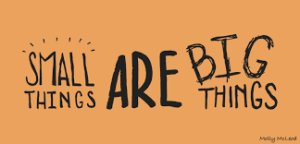The devil is in the details, right? Nothing could be truer then when you shape a behavior. When you shape a behavior you are rewarding the dog for approximations toward your end behavior. Now here is the thing, what will those be? Can you tell I might be teaching a retrieve class 🙂
I am always fascinated watching an animal learn, any animal. You can see them start to understand something and how it affects them. When you are shaping your animal is constantly learning, so what exactly are you teaching? I have seen dogs that absolutely think that the nose touch to a retrieve object is the end behavior. Over and over and over the trainer clicks/treats this, and guess what? If I were watching the training, unless the trainer had previously told me otherwise, I would think it was, too! Our dogs cannot learn anything different from what we tell them, and those clicks and those treats are communication on a grand proportion to a dog!
This is where splitting behaviors comes in, with a caveat, only split if you have to! Bob Bailey has a saying “I am a diehard splitter, and an opportunistic lumper”. I just love that! Isn’t that the joy of training? You are in that moment with your dog and there is real communication going on and if the dog gives you a big leap in behavior, say takes that retrieve object and holds it on the first trial, take it! No need to go back to the nose touch unless you have to. I have even seen trainers “warm up” their dogs by rewarding the nose touch, even though last session they had a hold behavior. What is wrong with this picture? Let’s think like a dog…………..
Retrieve object comes out, I nose touch 4 times, get reinforced 4 times, and on the 5th there is no reinforcement. What is a dog going to do? Try harder! Try other things! You told them that was the behavior, and they believed you. Can you see how staying at one point in your criteria toward your end behavior can slow up learning?
How can we change this? Make a plan! What are the steps that are needed to teach the behavior? What do they look like? Decide how long you want stay there before going to your next behavior. Do you really want to reward the nose touch to the retrieve object 130 times before moving on to the dog opening their mouths on the object? Can you see how frustrating that would be for the dog to receive that much reinforcement for something, be absolutely sure that is what you want, and then for reinforcement to stop. Right here, this one step of making a plan can save you and your dog a lot of frustration.
Set a timer! I don’t know about you, but once I get training, I can really lose track of time, so guess what I have at my building? A timer, front and center near my training bag. For shaping, nothing wrong with putting 2 or 3 mins. on the timer and stopping when you are done, no matter how it is going. If it is going well, it allows you a little break so you can think of the next step. Not so great? It will stop you from digging a hole that you have to get out of. It’s nice to limit the mistakes.
Across the board, the shaped retrieve is one of my student’s most frustrating behaviors to train. There really is no good way to lure it, if you put food on the object, the minute it is gone, the behavior is gone. It is easy to get stuck at one criterion, and some trainers have a hard time really splitting the training down for the dog. I am going to be offering a retrieve class called Deconstructing the Retrieve. I had to think about this! I had to think of all the steps that need to happen, think about what to do if there is a leap in behavior, and how to explain what we are looking for as we go through the shaping process. It has been fun!
I have had a little help, namely Jace my Husky, Shine my Border Collie and Turbo a student’s Sheltie. If you are looking for a class to help you with your retrieve behavior, it will start on November 15th. You can sign up for the class or learn more by clicking here.
We also do some talking about retireves in our podcast from November 7th! You can listen to it by clicking here.





No comments yet.